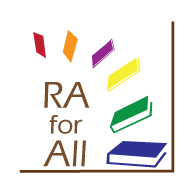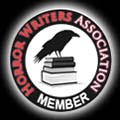Today’s guest post, By Eric Guignard, is one of the best I have ever had. First here is more about Eric:
Eric J. Guignard is a writer, editor, and publisher of dark and speculative fiction, operating from the shadowy outskirts of Los Angeles. He’s won the Bram Stoker Award, been a finalist for the International Thriller Writers Award, and a multi-nominee of the Pushcart Prize. Outside the glamorous and jet-setting world of indie fiction, he’s a technical writer and college professor. Visit Eric at: www.ericjguignard.com, his blog: ericjguignard.blogspot.com, or Twitter: @ericjguignard
Below, Eric writes very persuasively about why horror matters in general, and in particular why today’s practitioners of dark short stories are the authors you most need to know about. But don’t worry, he is going to help you by writing short primers on these authors like
Steve Rasnic Tem,
Kaaron Warren and
Nisi Shawl. In these books, Eric provides his analysis of these living authors AND gives you entire short stories by them in order for you to understand their work in context.
Read what Eric has to say below about horror and it’s place as one of the most important genre of our times AND look into
ordering his Primers for you and your patrons. These titles will make for a good read for horror fans who are looking to delve more deeply into the genre and its history, will allow you to understand the genre better, will make for an excellent collection development tool, and finally, will serve as a much needed research tool for students.
I for one am super excited about his planned volume on
Nisi Shawl. She is a fantastic writer who is exploding in popularity. We need more critical works about her.
A New Primer Series for Studying Short Story Horror Authors and Why It Matters
by Eric J. Guignard
###
I’ve recently begun a series of “Primer” books, titled EXPLORING DARK SHORT FICTION, which examines introductory literary theory of modern (living) authors who write dark and fantastic short fiction stories. These books are meant for general audiences as just basic light analysis of progressive and outstanding authors who deserve wider recognition, in order to help expand perception of the genre and to promote the short story form.
And here (as I know you’re asking) is why I’m doing it!
I love horror fiction. And you, I presume, by way of reading this blog post, most likely do too. Fiction, in general, invigorates the imagination and inspires creativity and a love for learning, while horror, in particular, is most advantageous in accomplishing these things, albeit with a darker bent and a bad reputation.
Horror should not have this bad reputation. It incites a deeper awareness of one’s surroundings; it soothes stress by providing diversion and an emotional outlet; it creates an adrenaline rush and releases “feel good” chemicals in the brain such as dopamine and serotonin (good for combating depression and anxiety); it incites empathy for others, allows us to envision things or situations that (probably!) don’t exist, as well as challenges us, and provides adventure, action, and thrills (as it does, most, for me).
And perhaps you’ve heard that all before. Unfortunately, it doesn’t do a lot to persuade the public’s general opinion: horror is often disdained. Neglected. Mocked. (insert sad face here.)
Which is unfortunate, as horror fiction can also be literary. It’s an art form, with its own message to tell, and that message can affect people deeply, and it can be interpreted a thousand different ways. Modern horror can be just as poetic and ideological as Walt Whitman, as poignant as John Steinbeck, and as sentimental as Toni Morrison; it can be political, scholarly, satirical, and, quite simply, beautiful, yet with a dark and speculative element attached, which, to me, is the element of excitement I happen to crave. So in my ranking of preference, literary horror, with something “unbelievable made real,” is twice the benefit!
Now, yes, yes, you beg to differ, there is much study done of horror authors. Yet if you were to hear the names of scribblers of the macabre, or read the works in advance of some class discussion, or were to sit in on a panel of horror genre influences, the same two names who are generally given any academic credibility will come up repeatedly ninety percent of the time: Edgar Allan Poe and H. P. Lovecraft, and these authors being from generations ago. These names are widely recognized as the champions of poetic and descriptive dark prose, yet Lovecraft perished over eighty years ago, and Poe near a century before that. What they wrote is still compelling today—I’m not saying otherwise—but, so to, are there living authors whose words can shape the boundaries of your imagination, who can invigorate and capture our modern era tastes and sensibilities, who can connect to us in ways not possible by our literary forebears, names such as Joyce Carol Oates, Neil Gaiman, Tananarive Due, Junot Díaz, Ramsey Campbell… I could go on.
Additionally, and though I love novels, I happen to love short stories even more. Short stories are compact and present a message and narrative structure in only the fraction of a novel’s length. In the time it would take me to read the latest by Anne Rice or Dan Simmons, I can devour fifteen to twenty-five short stories! That’s fourteen to twenty-four more points of view, ideas, diverse voices, experimentation, and story lines than I would absorb compared to the novel. Of course, I realize I’m in the minority opinion here, and I know there’s the cost for my preference to the short form: less character rapport, less exposition and backstory, less opportunity for extrapolation, but I’m an idea guy—I like it short and punchy. Blame it on watching episodes of The Twilight Zone and Amazing Stories, and reading the shorts of O. Henry and Rudyard Kipling as a child.
Also, I just like the fact that I can reproduce the entirety of short stories in these primers, rather than only excerpts of longer works, which doesn’t always provide as comprehensive a picture to their vibrancy and impact.
So, attributes of: Literary writing, AND horror genre, AND short story format AND contemporary authors all combined equals a void in literary theory , a need, if you will, for discussion and promotion.
And that is a void that I’d like to fill.
Consequently that fulfillment begins now, with the subject of Primer #1, Steve Rasnic Tem, who has been penning inventive and affecting tales for over forty years. Steve Rasnic Tem, who has attained a sort of literary célèbre in the genre community, but may not be as widely recognized amongst mass market readers. Steve Rasnic Tem, who just perfectly fit all criteria to kick off this series.
After him, Primer #2 will release in early 2018, a study of Australian author, Kaaron Warren. Then Primer #3 is scheduled for Nisi Shawl, and #4 for Jeffrey Ford.
And besides selecting authors that I just happen to subjectively “like,” I defined a list of criteria in helping to select distinct and diverse voices as per the following. The selected author:
- Is still living
- Is still actively writing (dependent on #1)
- Has a large, influential body of work including dark fiction in short story form that spans at least 25 years
- Possesses a body of work, besides novels and other forms, that includes at least 50 short story pieces
- Has received at least one major industry fiction writing award
- Is someone I have access to
- Is willing to write me an original story
I’m sure there are other author names you immediately think of; there are many, many authors who fit all this criteria. The challenge is to find writers that by their greater aggregate will compliment and advance each other—and the genre—by showing the depth of the form, the rich difference in voice and influence that is possible, rather than putting forth a lot of similar styles and backgrounds.
So for each primer itself, I’m hoping to give a wide representation of who the author is, what they’re capable of, and why they’re important, without overwhelming the reader. To that end, I’ve compiled a structure of information for each primer, to include the following:
- A selection of six short fiction stories that in their entirety span a range of the majority of the author’s professional writing career (i.e. examples from their early stages, mid-stages, and present stages of writing).
- The stories include both literary and horror (including subtle, psychological, or ‘weird’) or dark fantasy elements (i.e. no science fiction works).
- Stories would appeal to a wide audience, and are meant for general readership, ages about 12-14 years old and up (i.e. no erotica works).
- Subject matter in stories represents a range of topics, such as origin stories, dystopian, action, mythology, fairy tale, monster, ghost, etc.
- Of the six stories, five are reprints, and one is original, written for this Primer
- Academic commentary by Michael Arnzen, PhD (former humanities chair and professor of the year, Seton Hill University)
- Author Interview
- Author Biography
- Author Bibliography
- Author Essay
- Hand-illustrated throughout by artist Michelle Prebich
Ultimately, I hope this series to find some sort of success, to be found interesting and meaningful, to “fill the void”, per se, and to find longevity, not only in the publishing of future volumes, but in the minds of readers, students, and academics alike.
Less I bore you with further qualitative data and reasoning, I wish only to close with the following thought, that in a world of fast-changing tastes and values, there is one constant: Extraordinary writing carries on.
I’d just like to see that the purveyors of this writing be remembered.










